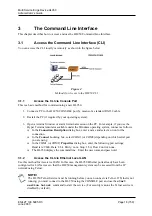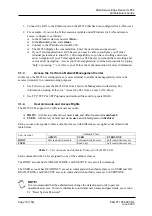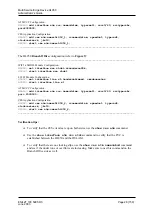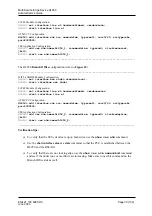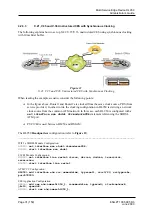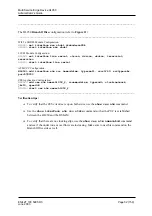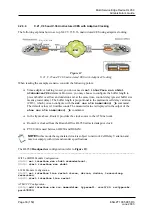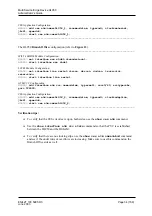
Multi Service Edge Device HL950
Administrator’s Guide
Page 19 (159)
EN/LZT 108 5995 R3
June
2003
1. Connect the LAN to the Ethernet port on the HL950 that has been configured for LAN access.
2. For example, if you use the Telnet session available under Windows for LAN and remote
access, configure it as follows:
!
In the Windows start menu select
Run…
.
!
In the
Run
dialog box enter
telnet
.
!
Connect to the IP address for the HL950.
!
The HL950 displays the command line. Enter the user name and password.
!
If your Telnet application is GUI-based, you may be able to configure your Telnet
terminal preferences to allow VT-100 compatibility so you have scrolling and cursor
arrow navigation. If your Telnet application is CLI-based, you should have scrolling and
cursor arrow navigation. Access your Telnet application’s online help (usually by typing
‘help’ or pressing ‘?’), or refer to your Telnet client documentation for more information.
3.1.3
Access the CLI from a Network Management Center
In this case, the HL950 is configured as a remote terminal to enable its management system to be
accessed remotely for commissioning purposes:
1. Use Telnet to access the HL950 CLI from a Network Management workstation. For
information on using Telnet, see “Access the CLI from a Local LAN” above.
2. Use FTP, TFTP or SFTP upload and download files and for general OAM.
3.1.4
User Accounts and Access Rights
The HL950 CLI supports two different user accounts;
!
ROOT
– with factory default user name
root
, and default password
snowbomb
!
USER
– with factory default user name
user
, and default password
firebird
Each account corresponds to three authority classes with different access rights as described in the
table below.
Authority Class
User Account
ADMIN USER EVERYONE
ROOT
Full read/write/execute
Full read/write/execute Full
read/write/execute
USER
-
Read only
Full read/write/execute
Table 1
- User Accounts and Authority Classes for the HL950 CLI
Each command in the CLI is assigned to one of the authority classes.
The ROOT account has full READ, WRITE, and EXECUTE access to all commands.
The USER account has READ ONLY access to commands with authority class set to USER and full
READ, WRITE, and EXECUTE access to commands with authority class set to EVERYONE.
NOTE!
It is recommended that the administrator change the default passwords to prevent
unauthorized access. For more information on default user names and passwords, see section
8.1 “Reset System Password”.














